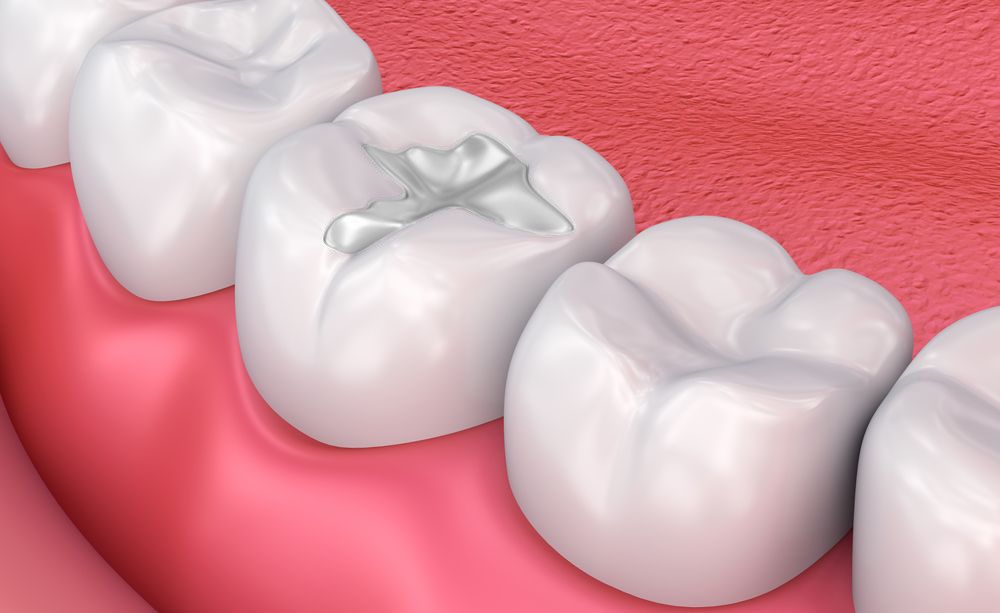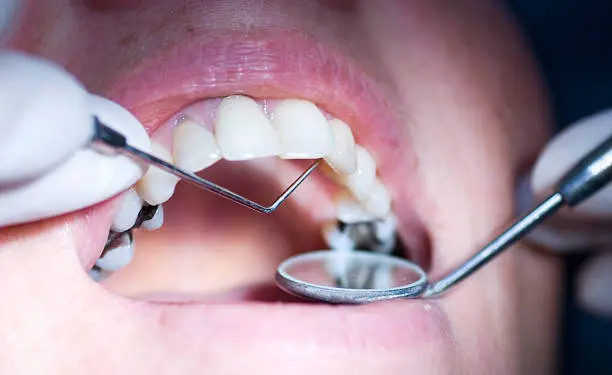Fillings
Dental fillings are a trusted solution for restoring teeth damaged by decay or minor fractures. Using advanced materials that match your natural tooth color, our skilled dentists remove any decay and carefully fill the treated area to protect your tooth. This common procedure not only stops decay from spreading but also rebuilds your tooth's strength and function.
Modern fillings are virtually invisible, durable, and can last for many years with proper care. The procedure is quick, comfortable, and typically completed in a single visit. At our practice, we use the latest techniques and high-quality materials to ensure your filling looks natural and feels completely comfortable.
Types
These premium fillings offer the most natural-looking results and exceptional durability. Made from high-grade dental porcelain, they resist staining and wear better than other tooth-colored options. While more expensive, they provide superior aesthetics and longevity.
Made from a tooth-colored mixture of plastic and glass particles, composite fillings blend seamlessly with your natural teeth. These modern fillings bond directly to your tooth structure, providing excellent support while maintaining a beautiful smile. Ideal for visible areas and suitable for small to medium-sized cavities.
Perfect for children's teeth and small cavities near the gum line, glass ionomer fillings release fluoride to help protect against future decay. Though less durable than other options, they provide an excellent solution for specific dental situations and non-biting surfaces.
Gallery
Visual insights to help you understand what to expect from your treatment. For more content, please refer to our Education Hub.

Benefits & Considerations
Everything you need to know to make an informed decision about your treatment.
Benefits
Prevents Further Decay
Fillings create a protective barrier that seals off spaces where harmful bacteria could enter and cause more damage. This helps protect the vulnerable inner layers of your tooth and prevents the need for more extensive treatments like root canals in the future.
Restores Tooth
By rebuilding the damaged portion of your tooth, fillings help you regain normal biting and chewing function. They're carefully shaped to match your tooth's natural contours, ensuring proper alignment with opposing teeth and maintaining your comfortable bite pattern.
Quick Procedure
Most filling procedures can be completed in just 30-60 minutes during a single appointment. Using modern techniques and materials, your dentist can remove decay, place the filling, and adjust it for comfort all in one efficient visit – letting you get back to your day quickly.
Considerations
Temporary Sensitivity
Temporary discomfort to pressure, temperature, or sweet foods may occur for a few days to weeks after treatment. This is normal and usually resolves naturally as your tooth adapts to the filling. Your dentist can adjust the filling if sensitivity persists.
Wear & Tear
Like natural teeth, fillings face daily stress and may gradually show signs of wear. Their longevity depends on the material used, location, and oral care habits. Regular check-ups help monitor their condition to prevent potential tooth damage.
Treatment Procedure
Let's walk through your treatment procedure from start to finish.
Local Anesthesia
The dentist administers local anesthesia to numb the area around the affected tooth to prevent discomfort during the procedure.
Decay Removal
The dentist uses a drill, air abrasion instrument, or laser to remove decayed material from the tooth.
Cavity Cleaning
Once decay has been removed, the area is cleaned to remove bacteria and debris.
Filling Placement
The dentist fills the cleaned-out cavity with one of several filling materials depending on the chosen type.
Finishing & Polishing
After the filling material is placed, the dentist will finish and polish it, ensuring that the shape and bite align correctly with the rest of the teeth.
Post-Operative Care
Simple steps to protect your smile and ensure optimal results in the days following your procedure.
Numbness
If you've received local anesthesia, the numbness in your mouth might last for a few hours. Be careful not to bite your cheek, lip, or tongue while they are numb.
Eating & Drinking
Avoid hot beverages and hard or chewy foods until the numbness wears off. Once it does, you can eat normally, but it might be best to chew on the opposite side of your new filling for 24 hours.
Temporary Sensitivity
It is common to experience sensitivity to hot, cold, or pressure after a filling is placed. This sensitivity should decrease over a week or two. Using toothpaste for sensitive teeth can help mitigate this discomfort.
Avoid Hard Foods
In the days following your procedure, avoid biting directly on hard foods, such as ice or hard candy, with the filled tooth to prevent any damage to the new filling.
Avoid Grinding
If you grind or clench your teeth, you might be at risk of damaging your fillings as well as your natural teeth. Consider discussing with your dentist whether you need an occlusal splint/nightguard.

Dental fillings are a standard part of oral health maintenance and are crucial for restoring dental health after decay. When a filling is needed, various materials offer flexibility in terms of costs, appearance, and durability, suiting different personal preferences and requirements.
Regular dental visits are recommended to monitor the condition of fillings and to manage early signs of dental degradation.